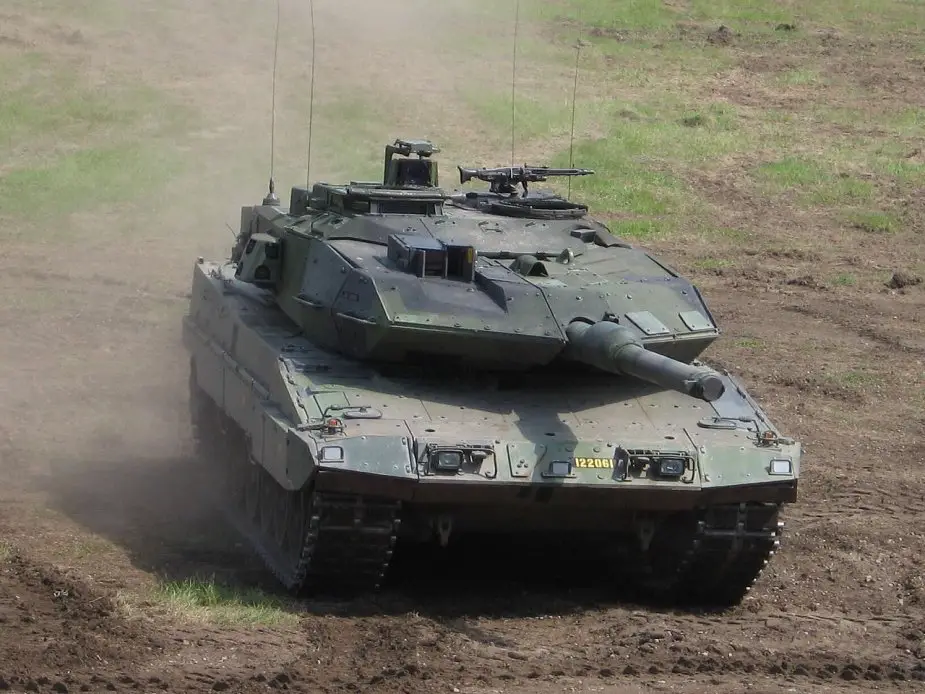Breaking news
Fearing Russia, Sweden is rearming.
News reports show how much Sweden is rearming by fear of its Russian eastern neighbor. The population is also encouraged and instructed about how to survive namely in case of war, instruction brochures being sent to all households. While not a NATO member, Sweden is working very closely with its armies.

Swedish Stridsvagn 122 (Picture source: sv.Wikipedia.se)
Sweden recently reinstated the military duty after having re-posted a small military unit on Gotland, its biggest island, of which the population nears 59,000 mainly settled in Visby, the main town. The island of Gotland and the other areas of the province of Gotland make up less than one percent of Sweden's total land area. Gotland is Sweden's largest island, and it is the largest island fully encompassed by the Baltic Sea (with Denmark's Zealand at the Baltic's edge). With its total area of 3,183.7 km2 (1,229.2 sq.mi.), the island of Gotland and the other areas of the province of Gotland make up 0.8% of Sweden's total land area.
From a military viewpoint, it occupies a strategic location in the Baltic Sea. As of 2018, the Gotland Regiment - 300 men, in fact, currently commanded by Colonel Mattias Ardin - has been re-raised and is the first time since World War II that a new regiment has been established in Sweden.
The Swedish government decided in March 2015 to begin reestablishing a permanent military presence on Gotland, starting with an initial 150 troop garrison, consisting primarily of elements from the Swedish Army. It has been reported that the bulk of this initial garrison will make up a new motorized rifle battalion, alternatively referred to in other reports as a "modular-structured rapid response Army battalion". A later report claimed that plans were at an advanced stage for a support helicopter squadron and an Air Force "fast response Gripen jet squadron" to also be based on the island to support the new garrison and further reinforce the defenses. Prior to the disbandment of the original garrison, there had been a continuous Swedish military presence on Gotland in one form or another, for nearly 200 years.
After the standing down of the original garrison, a battalion of the Swedish Home Guard is based on Gotland for emergencies as part of the Eastern Military Region (MR E). The unit, 32:a Gotlandsbataljonen (the 32nd Gotland battalion), acts as a reserve component of the Swedish Amphibious Corps. Among the residual war reserve stocks reported to be still in storage on Gotland in March 2015, were 14 tanks (Stridsvagn 122s) at the Tofta skjutfält (the Tofta firing range), but without any crews or dedicated maintenance personnel assigned to them.
Gotland currently has no local air defense capability. Despite its importance as a naval base in the past, there are no naval units based out of Gotland. The Tofta firing range itself (also known as the Tofta Tank firing range), is a military training ground which is located 8 km (5 miles) south of Visby. Another less common name for the range is the Toftasjön firing range. Tracing its origins back to 1898, as of 2008 the range extended over 2,700 acres (11 km2). It was a major training and storage facility for the Gotland garrison during its existence and was still occasionally used for training by various elements of the Armed Forces since the garrison was shut down in 2005. However, from the second half of 2014 onwards, there has been a marked increase in the use of the range, especially by armored units (mostly company sized), as tensions in Northeastern Europe have escalated. At least one of the buildings on the range, the former tank repair shop, is currently owned by a private company (Peab), with the military renting back the top floor for its own use. When not used by the military, a number of cultural and sports events have been held at the range, one of the most notable being the Gotland Grand National, the world's largest enduro race.
As of 2018, Gotland has received a lot more attention military-wise and has seen a much larger spending on the military.


























